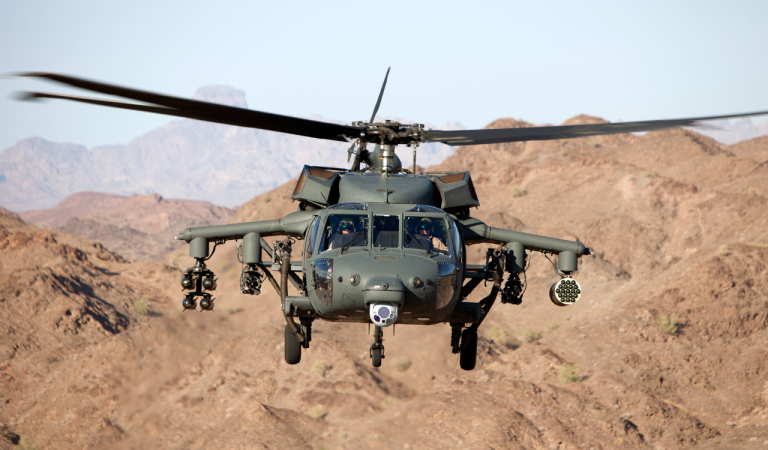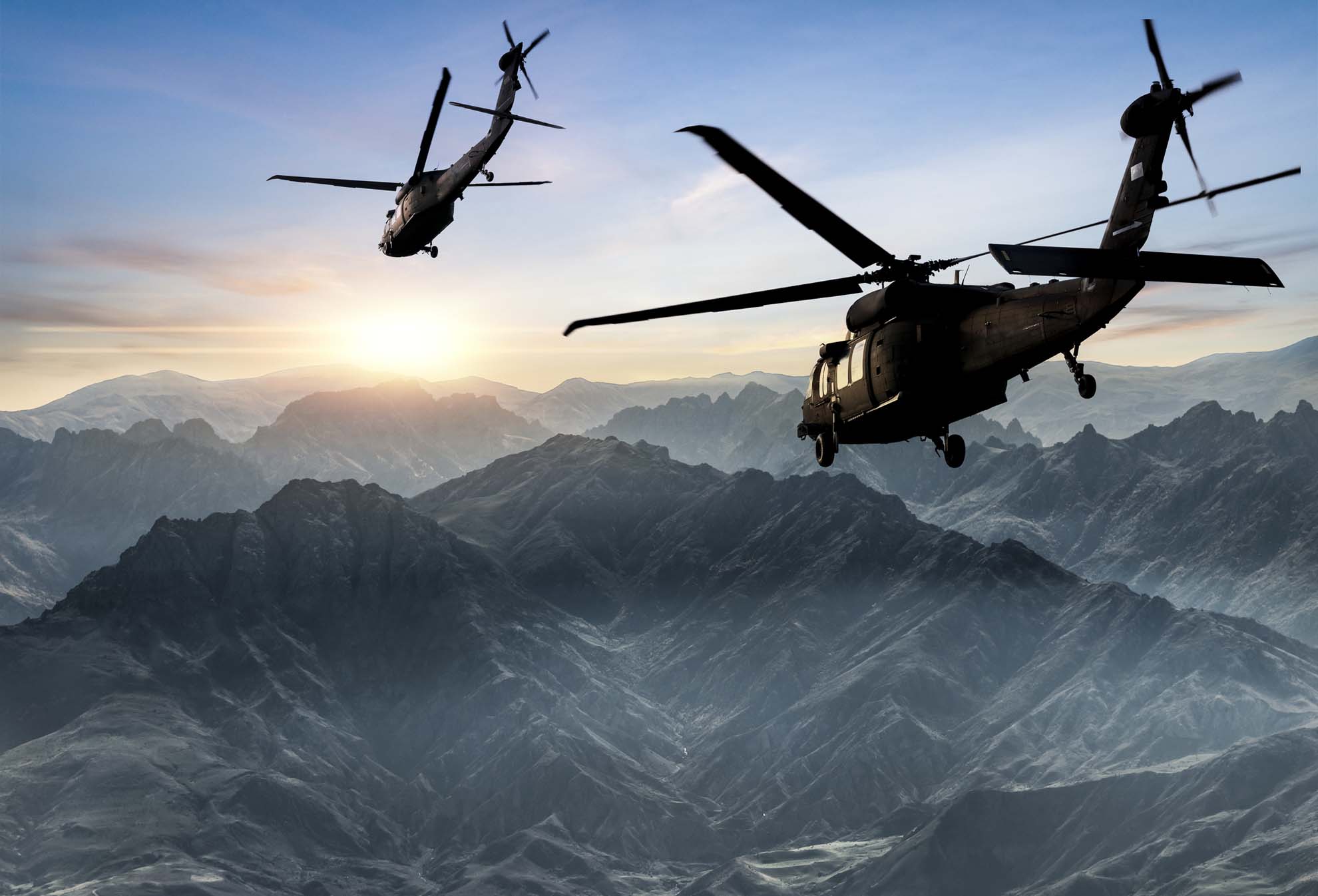Breaking Down the UH 60's Influence on Global Protection Methods and Workflow
Breaking Down the UH 60's Influence on Global Protection Methods and Workflow
Blog Article
UH-60: Developments in Modern Helicopter Layout
The UH-60 helicopter stands as a criteria in modern aeronautics, showcasing considerable improvements in style and modern technology that cater to the evolving demands of army operations. As we discover the development and key developments of the UH-60, it becomes vital to take into consideration just how these advancements influence not just current applications yet likewise the future landscape of helicopter style.

Evolution of the UH-60
The advancement of the UH-60 Black Hawk helicopter stands for a considerable turning point in aerospace design and armed forces aeronautics. Introduced in the late 1970s, the UH-60 was made by Sikorsky Airplane to satisfy the USA Army's requirement for a flexible energy helicopter efficient in executing a range of objectives. Its design emphasized resilience, maneuverability, and speed, setting new criteria for operational performance.
The UH-60 includes a distinctive four-blade blades system, which boosts lift and security, enabling it to operate effectively in varied settings. Its airframe is constructed from advanced composite products, adding to a decrease in weight while preserving structural integrity. The helicopter's design additionally includes improved the rules of aerodynamics, which enhances gas efficiency and enhances array.
Over the years, the Black Hawk has undergone several upgrades to improve its capacities, consisting of enhanced engines, advanced flight control systems, and modular systems for easy maintenance and flexibility. The helicopter's capacity to carry out missions varying from army transport to medical emptying has strengthened its role as a foundation of united state military operations. The UH-60 Black Hawk continues to be a prime example of how technology in helicopter design can substantially affect army effectiveness and functional versatility.
Advanced Avionics Solutions
Advancements in avionics systems have transformed the abilities of contemporary helicopters like the UH-60 Black Hawk, enhancing functional effectiveness and situational awareness (UH 60). The assimilation of sophisticated avionics enables boosted interaction, navigation, and trip management, making the UH-60 extra versatile in diverse goal profiles
Among the vital attributes is the sophisticated digital cockpit, which uses multifunction screens that supply real-time data, making certain pilots have instant access to essential flight details. This streamlining of details reduces pilot workload and improves decision-making procedures during complicated operations. Additionally, the incorporation of GPS and inertial navigating systems enables precise positioning and course preparation, enhancing goal implementation in challenging settings.
In addition, advanced avionics systems improve communication abilities via safe and secure data web links and voice communication systems, permitting smooth coordination with ground pressures and other airplane. The integration of automatic trip control systems even more adds to boosted stability and control, particularly in damaging weather condition conditions or during low-altitude maneuvers.
Engine and Performance Enhancements
Engine performance in contemporary helicopters has taken a significant leap onward, driven by advancements that increase efficiency, power, and dependability. At the leading edge of these advancements is the adoption of more powerful turboshaft engines, particularly those using innovative products and technologies that allow higher temperature tolerances and boosted thrust abilities. The UH-60 Black Hawk, for instance, utilizes the T700-GE-701C engine, which includes a dual-channel, full-authority electronic engine control system. This system improves efficiency while maximizing gas consumption and decreasing upkeep demands.
Moreover, the assimilation of engine health monitoring systems enables for real-time diagnostics and predictive upkeep, significantly boosting operational reliability. These systems not only alert teams to prospective concerns before they end up being important however additionally assist in extra reliable maintenance scheduling, see consequently reducing downtime.

Materials and Structural Innovations
Current developments in materials and architectural design have actually revolutionized modern helicopter building and construction, boosting both performance and durability. The introduction of advanced composite materials, such as carbon fiber enhanced polymers, has dramatically minimized weight while maintaining architectural integrity. This shift not just enhances fuel effectiveness but also boosts haul capability, enabling helicopters like the UH-60 to carry out even more varied goals.
In addition, developments in aluminum alloys and titanium components have actually added to improved resistance to deterioration and check these guys out tiredness, expanding the life-span of crucial airframe elements. The tactical usage of these materials has led to a decrease in upkeep requirements and boosted total operational preparedness.

Furthermore, the integration of computer-aided style (CAD) and additive production technologies has actually allowed more complex geometries and lightweight structures, maximizing the wind resistant efficiency of helicopter styles. These improvements promote fast prototyping and manufacturing, enabling suppliers to respond promptly to advancing objective requirements.
Security and Survivability Attributes
Safety and survivability features in modern-day helicopter layout have actually ended up being extremely important, reflecting the boosting needs for goal effectiveness in difficult environments. The UH-60 Black Hawk, a significant example, incorporates innovative technologies to improve crew and traveler security.
The helicopter likewise employs a ballistic security system, that includes armored crew seats and vital systems securing, reducing vulnerability to little arms fire and shrapnel. Boosted situational understanding is achieved via advanced avionics and sensor modern technologies, enabling pilots to discover and prevent risks effectively.
Additionally, the integration of redundancy in critical systems-- such as twin engines and several trip control channels-- ensures continued operation even if one system stops working. The UH-60 is outfitted with advanced emergency flotation gadgets, boosting survivability in water landings. Collectively, these functions not just improve the safety of personnel however additionally boost goal success rates in hostile environments, demonstrating the dedication to quality in helicopter design.
Verdict
The UH-60 helicopter stands for a significant improvement in modern air travel modern technology, integrating cutting-edge materials, cutting-edge avionics, and durable security functions. Overall, the UH-60 offers as a criteria for future advancements in helicopter design, personifying durability and flexibility in contemporary armed forces procedures.
The UH-60 helicopter stands as a criteria in modern-day air travel, showcasing substantial improvements in style and modern technology that provide to the developing demands of military operations. As we explore the evolution and crucial advancements of the UH-60, it becomes necessary to consider just how these growths influence not only current applications yet additionally the future landscape of helicopter layout.
Introduced in the look these up late 1970s, the UH-60 was developed by Sikorsky Airplane to meet the United States Military's requirement for a flexible utility helicopter qualified of carrying out a selection of goals. The UH-60 Black Hawk stays a prime instance of exactly how advancement in helicopter design can dramatically impact military efficiency and operational versatility.
Overall, the UH-60 offers as a benchmark for future growths in helicopter style, embodying strength and versatility in contemporary army procedures.
Report this page